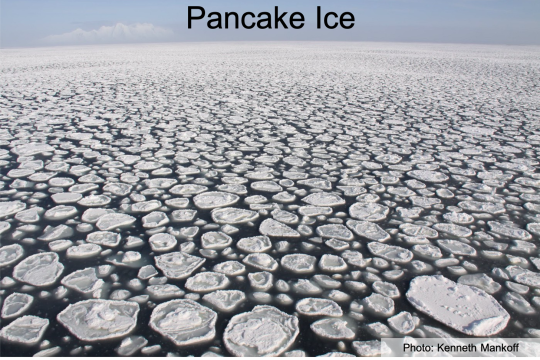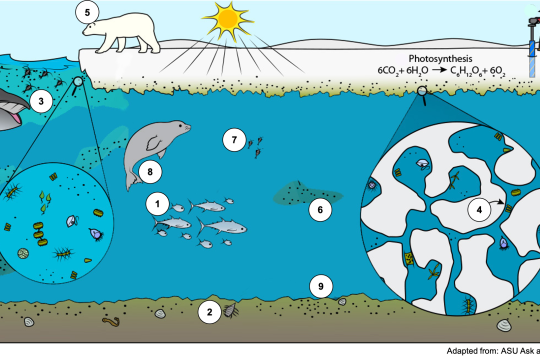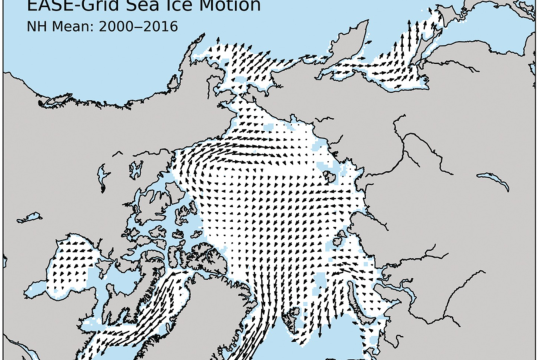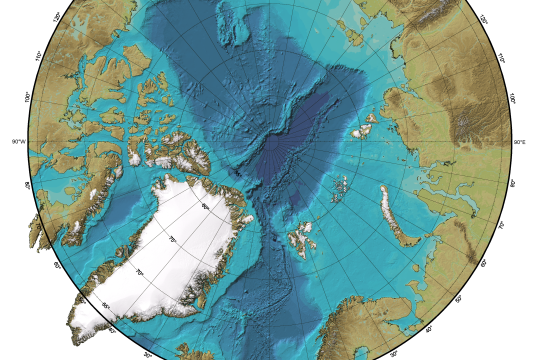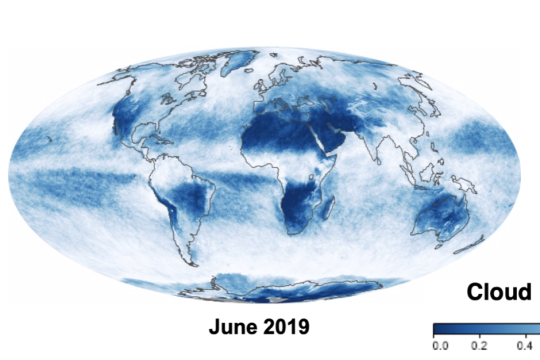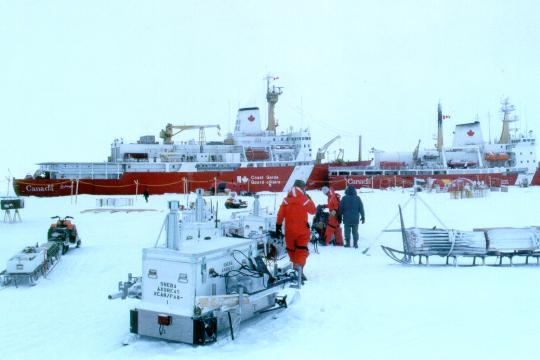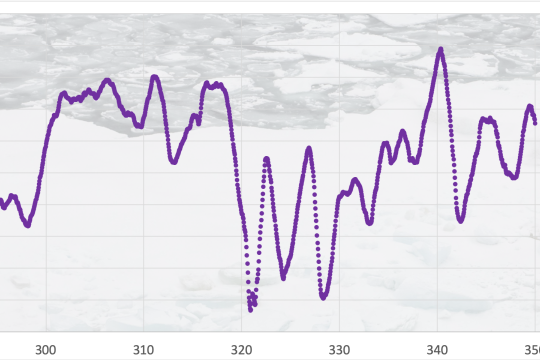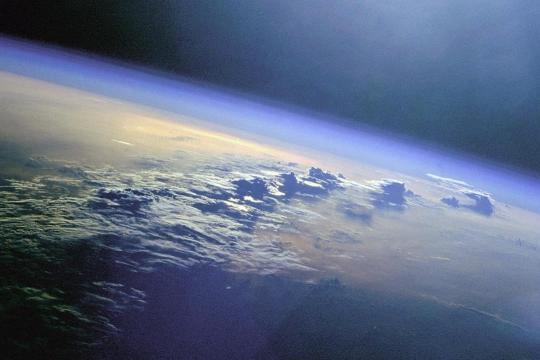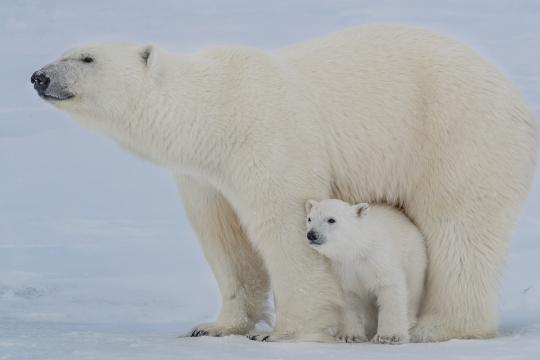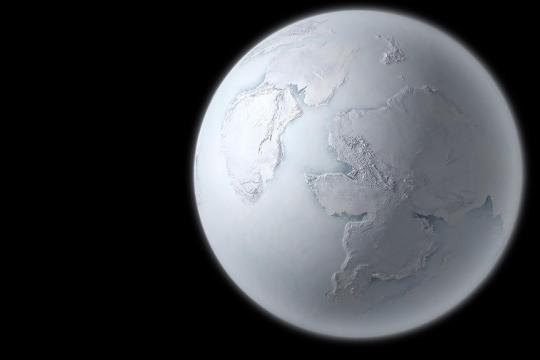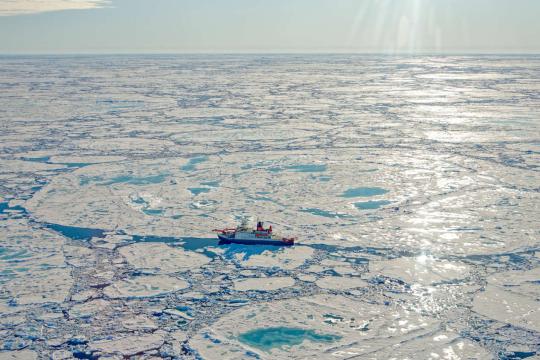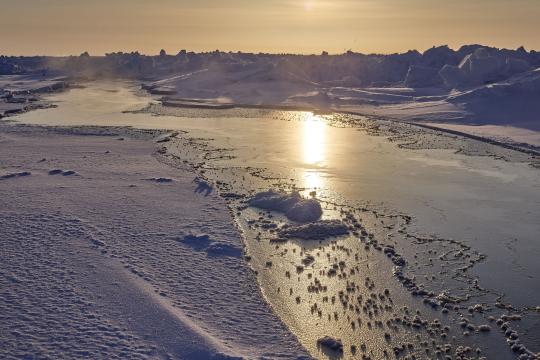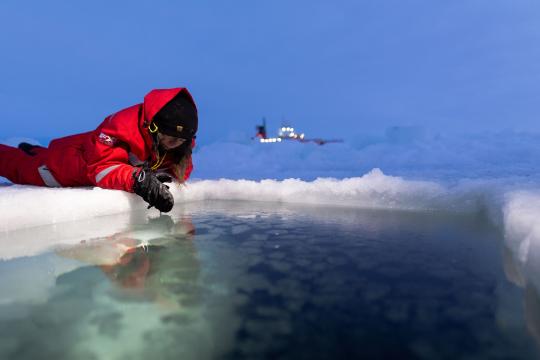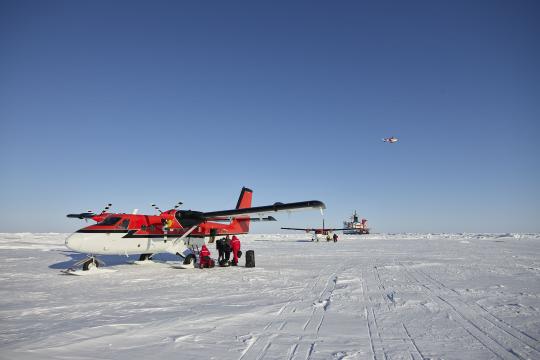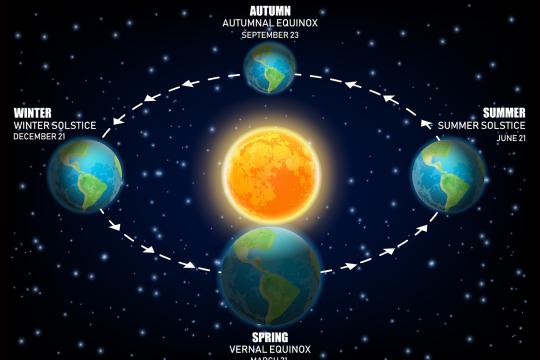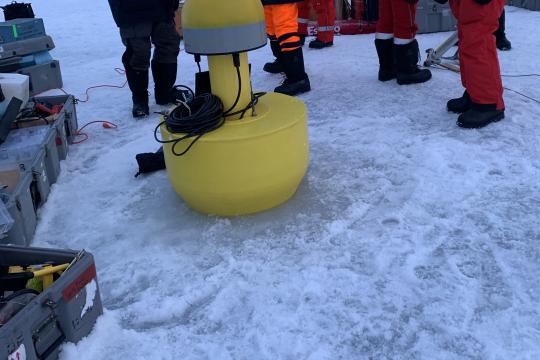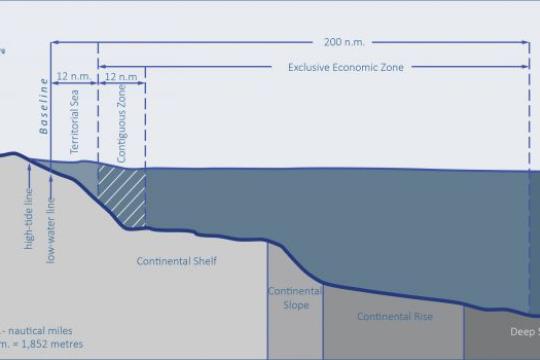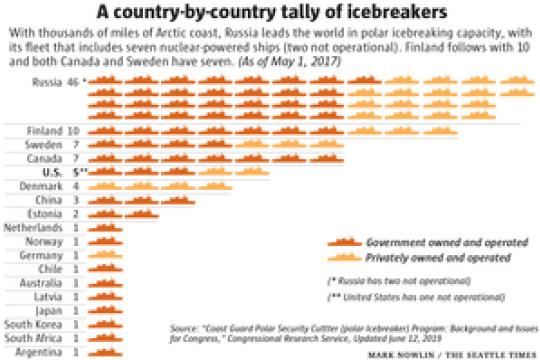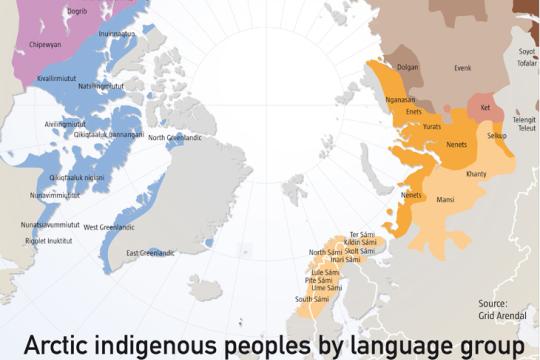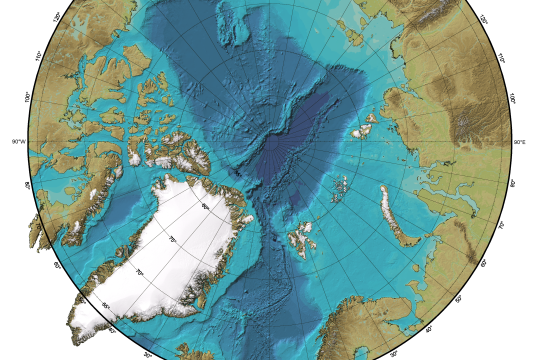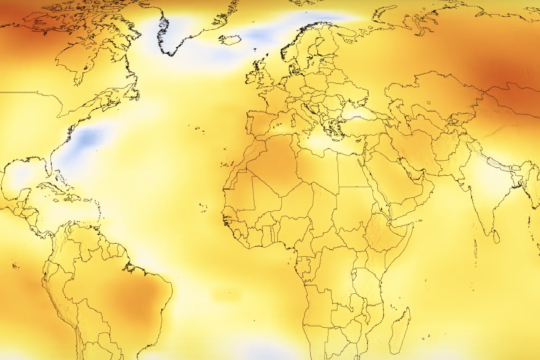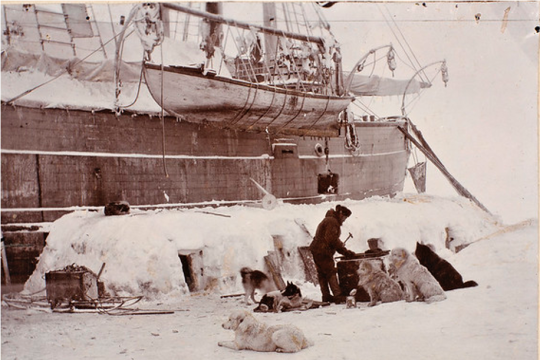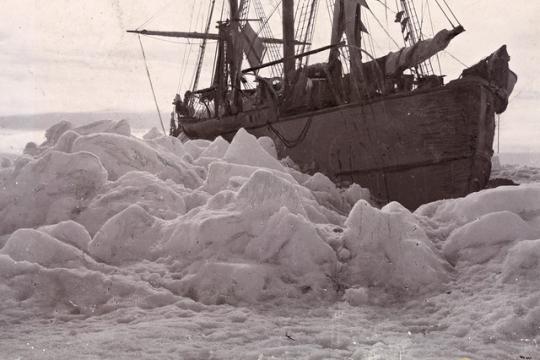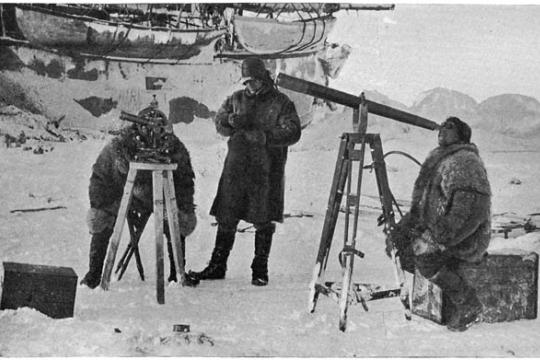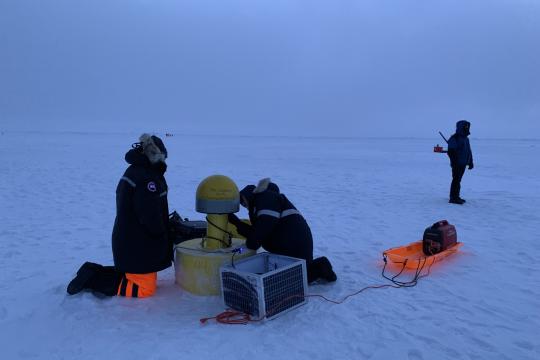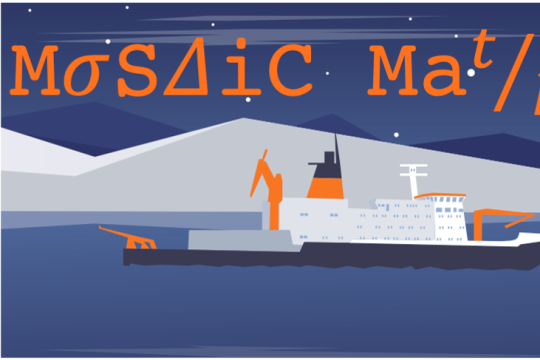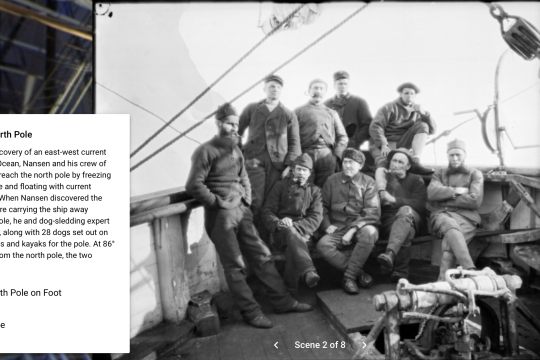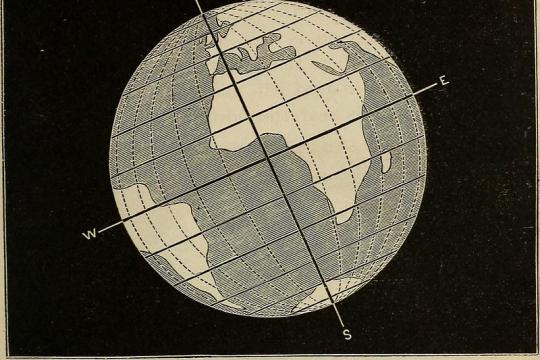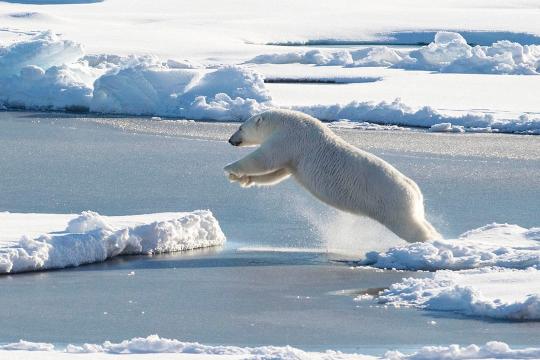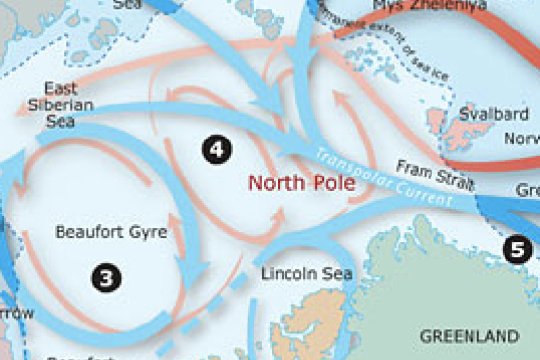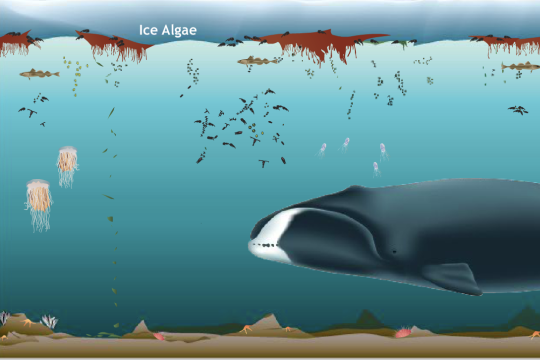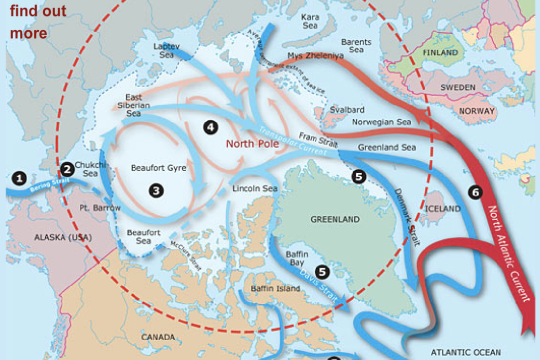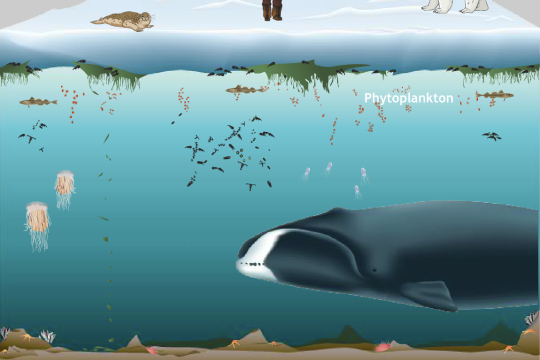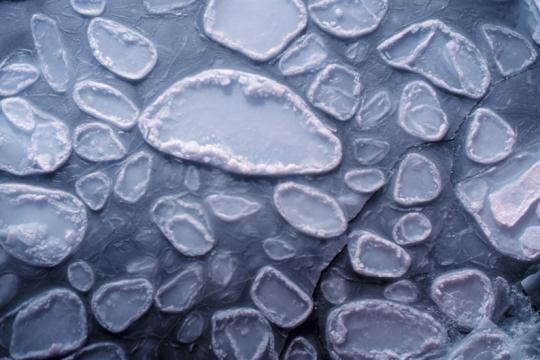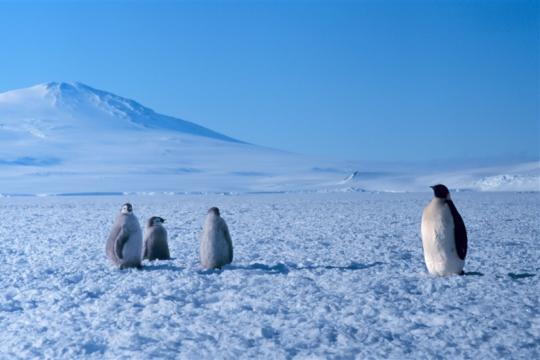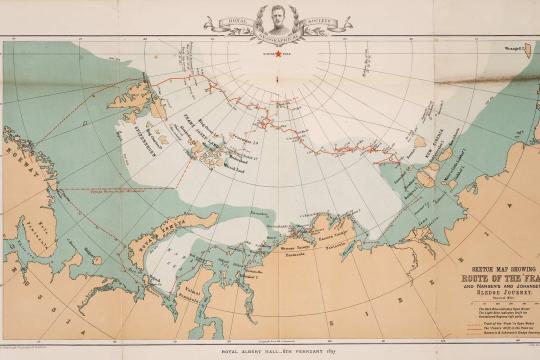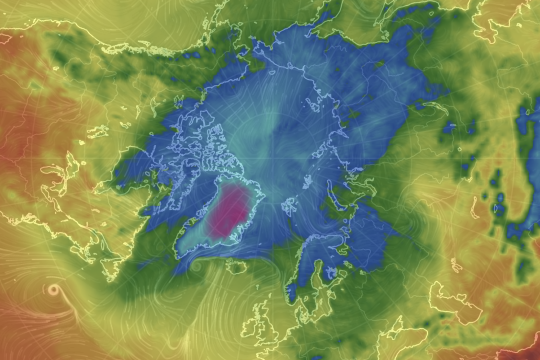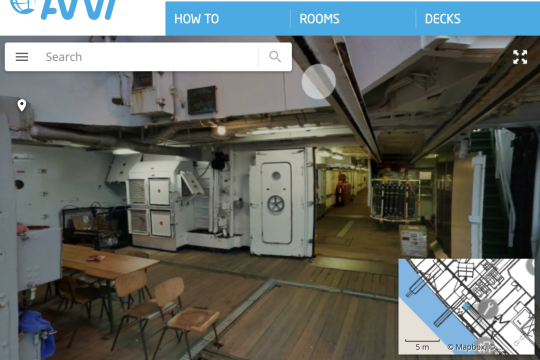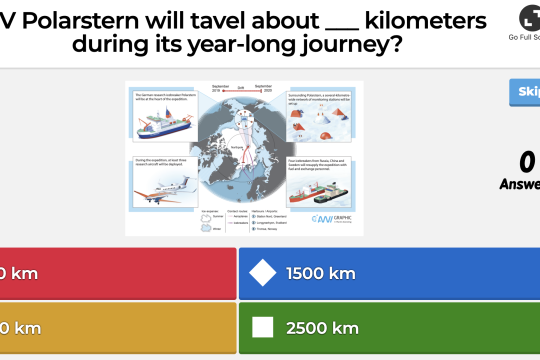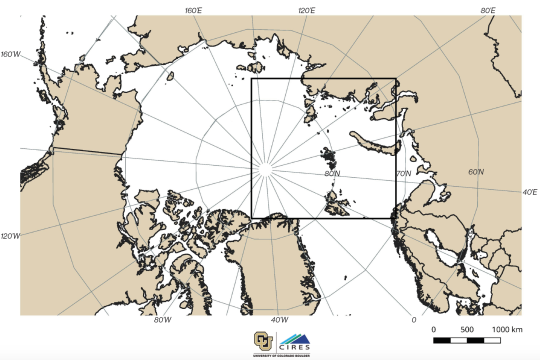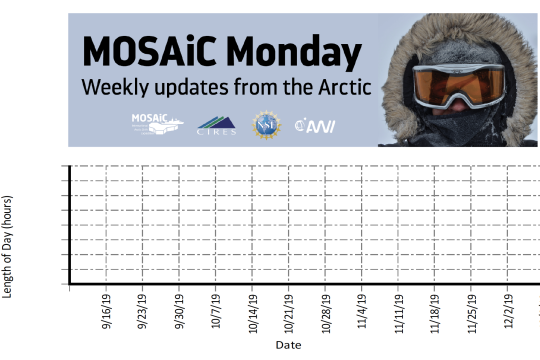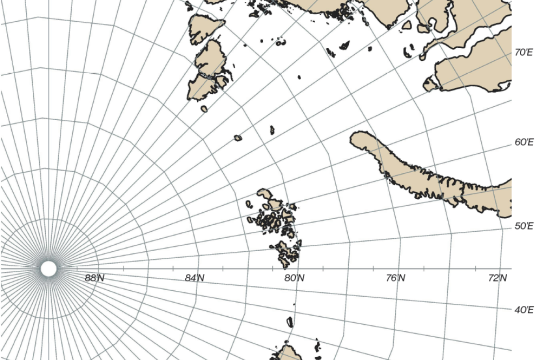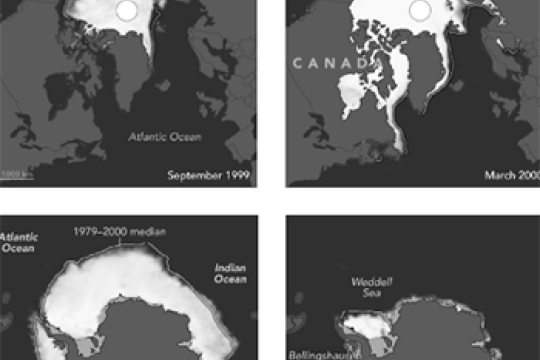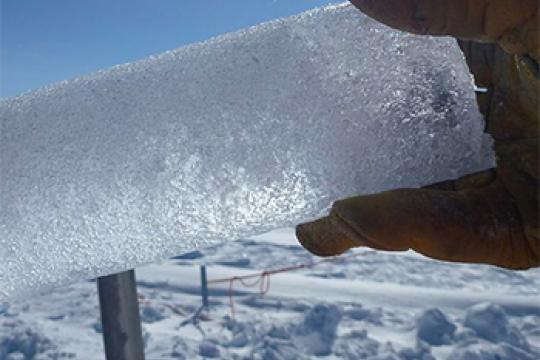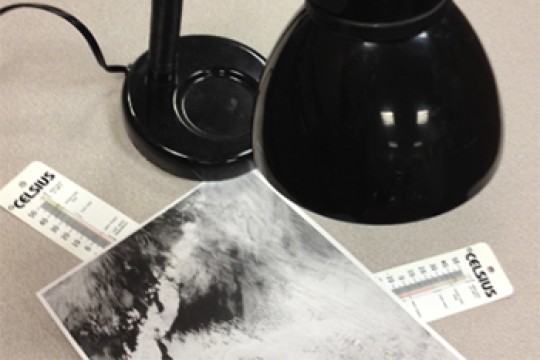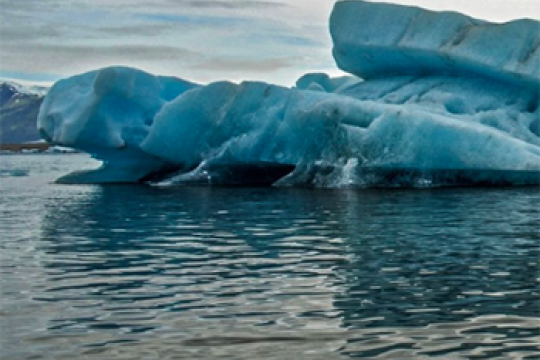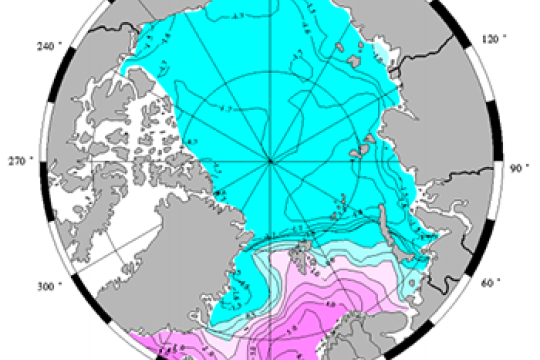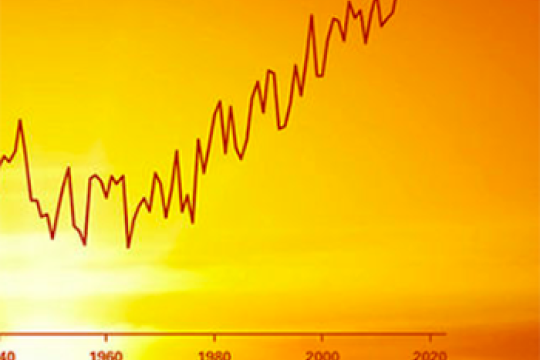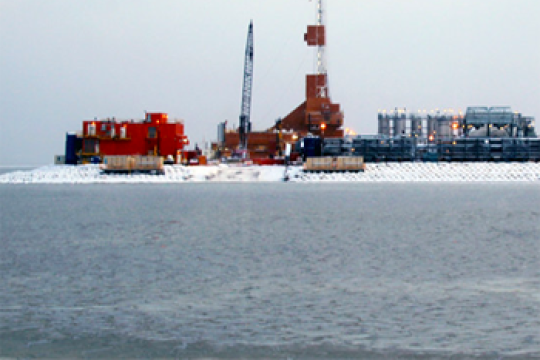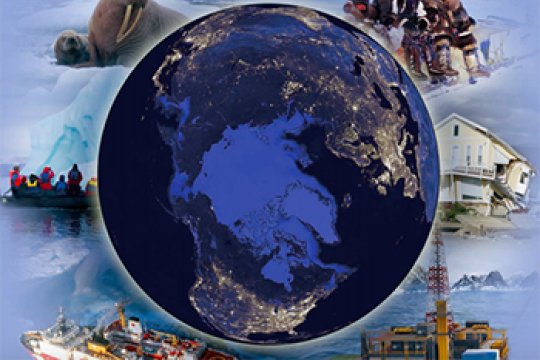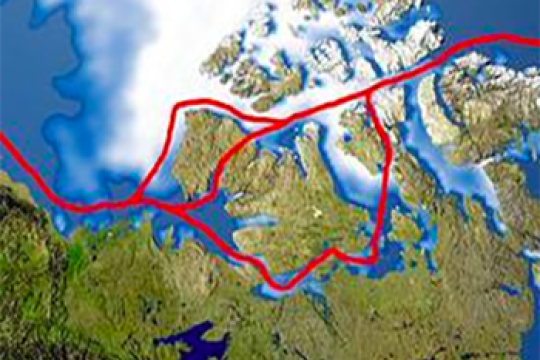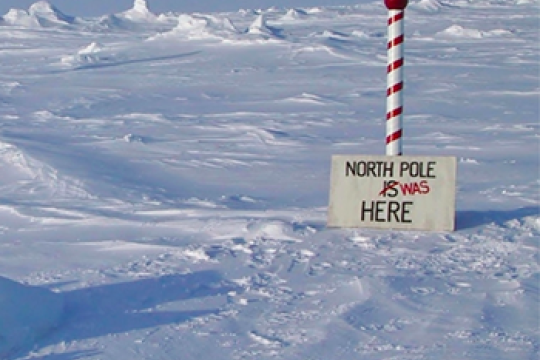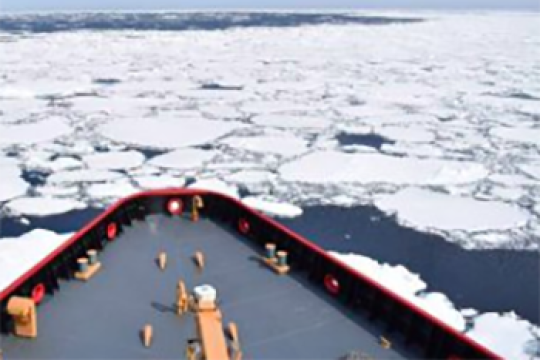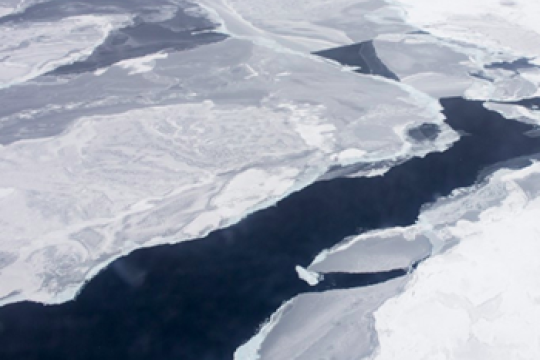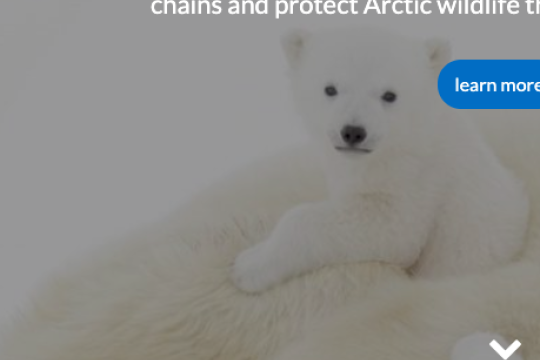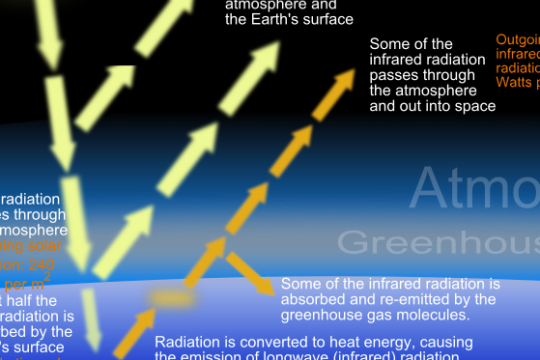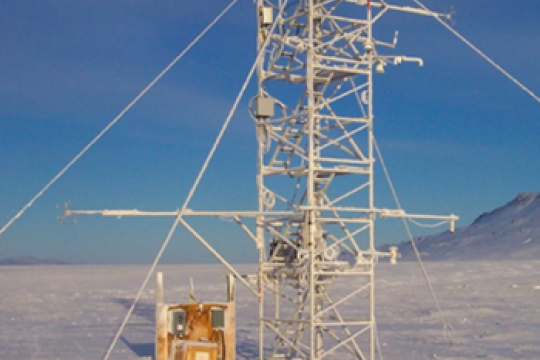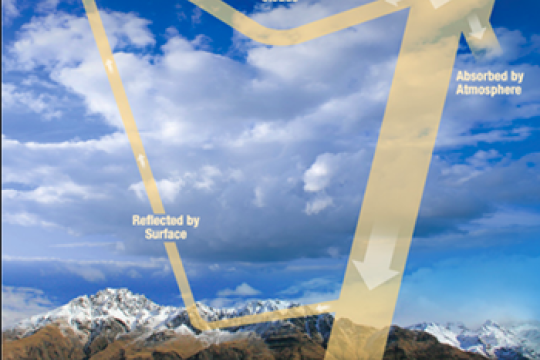High School
New Ice, New Problems
The sea ice in the Arctic is becoming newer and thinner. What kinds of impacts could this have on the Arctic region? Photo credit: Jan Rohde/AWI
Lesson plan
Subject: Expeditions, mosaic monday, Obtaining and evaluating information, Oceans and ocean circulation, Sea ice
Grade Level: Middle School, High School, University/college
Developer: CIRES
The sea ice in the Arctic is becoming newer and thinner. What kinds of impacts could this have on the Arctic region? Photo credit: Jan Rohde/AWI
Lesson plan
Subject: Expeditions, mosaic monday, Obtaining and evaluating information, Oceans and ocean circulation, Sea ice
Grade Level: Middle School, High School, University/college
Developer: CIRES
The Writing's in the Ice
Did you know that sea ice has a life cycle? Learn more in this short (~30 minute) activity.
Lesson plan
Subject: Arguing from evidence, mosaic monday, Sea ice
Grade Level: Middle School, High School
Developer: CIRES
Did you know that sea ice has a life cycle? Learn more in this short (~30 minute) activity.
Lesson plan
Subject: Arguing from evidence, mosaic monday, Sea ice
Grade Level: Middle School, High School
Developer: CIRES
Quick Bite: Fill in the Food Web
What does an Arctic food web look like, and what are the relationships between its members? Find out in this Quick Bite activity.
Quick bite
Subject: Constructing explanations, Developing and using models, Ecosystems, Life science, mosaic monday, Polar Bears
Grade Level: 3-5, Middle School, High School
Developer: CIRES
What does an Arctic food web look like, and what are the relationships between its members? Find out in this Quick Bite activity.
Quick bite
Subject: Constructing explanations, Developing and using models, Ecosystems, Life science, mosaic monday, Polar Bears
Grade Level: 3-5, Middle School, High School
Developer: CIRES
Quick Bite: Arctic Current Events
Can you identify currents in the Arctic Ocean using ocean motion vector maps? Figure credit: NASA/NSIDC/DAAC/University of Colorado Tschudi, Meier, Stewart
Quick bite
Subject: Earth science, mosaic monday, Oceans and ocean circulation
Grade Level: High School
Developer: CIRES
Can you identify currents in the Arctic Ocean using ocean motion vector maps? Figure credit: NASA/NSIDC/DAAC/University of Colorado Tschudi, Meier, Stewart
Quick bite
Subject: Earth science, mosaic monday, Oceans and ocean circulation
Grade Level: High School
Developer: CIRES
Quick Bite: The Arctic vs. the World
How does the Arctic Ocean's bathymetry compare to Earth's other ocean basins? Learn more in this Quick Bite activity.
Project of Mosaic Quick bite
Subject: Earth science, Geography, mosaic monday, Oceans and ocean circulation
Grade Level: Middle School, High School
Developer: CIRES
How does the Arctic Ocean's bathymetry compare to Earth's other ocean basins? Learn more in this Quick Bite activity.
Project of Mosaic Quick bite
Subject: Earth science, Geography, mosaic monday, Oceans and ocean circulation
Grade Level: Middle School, High School
Developer: CIRES
Quick Bite: Clouds in the Summer, Clouds in the Winter?
Is there seasonal variation in cloud cover in the Arctic? Learn more in this Quick Bite activity. Figure credit: NASA Earth Observatory
Quick bite
Subject: Analyzing and interpreting data, Atmosphere, Earth science, mosaic monday
Grade Level: Middle School, High School
Developer: CIRES
Is there seasonal variation in cloud cover in the Arctic? Learn more in this Quick Bite activity. Figure credit: NASA Earth Observatory
Quick bite
Subject: Analyzing and interpreting data, Atmosphere, Earth science, mosaic monday
Grade Level: Middle School, High School
Developer: CIRES
Quick Bite: Correlation, Causation, and Clouds
In this Quick Bite activity, students will examine actual data from the SHEBA Arctic research expedition to see if there is a correlation between surface temperature in the Arctic and cloud cover. Photo credit: Don Perovich
Project of Mosaic Quick bite
Subject: Analyzing and interpreting data, Atmosphere, Expeditions, mosaic monday
Grade Level: Middle School, High School
Developer: CIRES
In this Quick Bite activity, students will examine actual data from the SHEBA Arctic research expedition to see if there is a correlation between surface temperature in the Arctic and cloud cover. Photo credit: Don Perovich
Project of Mosaic Quick bite
Subject: Analyzing and interpreting data, Atmosphere, Expeditions, mosaic monday
Grade Level: Middle School, High School
Developer: CIRES
Quick Bite: Weathering the Storms
Scientists on the 2019-2020 MOSAiC expedition were interested in collecting air pressure data, as air pressure can give you an indication of weather changes. Can you identify changes in weather from actual air pressure data from the MOSAiC expedition?
Project of Mosaic Quick bite
Subject: Analyzing and interpreting data, Atmosphere, Expeditions, mosaic monday
Grade Level: Middle School, High School
Developer: CIRES
Scientists on the 2019-2020 MOSAiC expedition were interested in collecting air pressure data, as air pressure can give you an indication of weather changes. Can you identify changes in weather from actual air pressure data from the MOSAiC expedition?
Project of Mosaic Quick bite
Subject: Analyzing and interpreting data, Atmosphere, Expeditions, mosaic monday
Grade Level: Middle School, High School
Developer: CIRES
Quick Bite: Pondering Pressure
What is air pressure? Explore this and more using a PhET simulation in this Quick Bite activity. Photo credit: Mario Armas/Reuters
Quick bite
Subject: Constructing explanations, Developing and using models, mosaic monday, Physical science
Grade Level: Middle School, High School
Developer: CIRES
What is air pressure? Explore this and more using a PhET simulation in this Quick Bite activity. Photo credit: Mario Armas/Reuters
Quick bite
Subject: Constructing explanations, Developing and using models, mosaic monday, Physical science
Grade Level: Middle School, High School
Developer: CIRES
Quick Bite: How did MOSAiC scientists study the Arctic atmosphere?
Learn about the various instruments scientists used to study the atmosphere during the 2019-2020 MOSAiC expedition in this Quick Bite activity.
Project of Mosaic Quick bite
Subject: Atmosphere, Earth science, Engineering and technology, Expeditions, mosaic monday, Physical science
Grade Level: Middle School, High School
Developer: CIRES
Learn about the various instruments scientists used to study the atmosphere during the 2019-2020 MOSAiC expedition in this Quick Bite activity.
Project of Mosaic Quick bite
Subject: Atmosphere, Earth science, Engineering and technology, Expeditions, mosaic monday, Physical science
Grade Level: Middle School, High School
Developer: CIRES
Quick Bite: Alien Atmospheres
Do other planets in our solar system have atmospheres? If so, how to they compare to Earth's? Find out in this Quick Bite activity. Photo credit: NASA
Quick bite
Subject: Atmosphere, Earth science, mosaic monday, Obtaining and evaluating information
Grade Level: Middle School, High School
Developer: CIRES
Do other planets in our solar system have atmospheres? If so, how to they compare to Earth's? Find out in this Quick Bite activity. Photo credit: NASA
Quick bite
Subject: Atmosphere, Earth science, mosaic monday, Obtaining and evaluating information
Grade Level: Middle School, High School
Developer: CIRES
Quick Bite: Polar Bear Adaptations
How are polar bears adapted to their chilly environment? Photo credit: Lianna Nixon, CIRES/CU Boulder
Project of Mosaic Quick bite
Subject: Constructing explanations, Life science, mosaic monday, Polar Bears
Grade Level: 3-5, Middle School, High School
Developer: CIRES
How are polar bears adapted to their chilly environment? Photo credit: Lianna Nixon, CIRES/CU Boulder
Project of Mosaic Quick bite
Subject: Constructing explanations, Life science, mosaic monday, Polar Bears
Grade Level: 3-5, Middle School, High School
Developer: CIRES
Quick Bite: Climate is a System
In this Quick Bite activity, your students will explore how Earth's systems are interconnected by becoming members of the 2019-2020 MOSAiC expedition science teams.
Project of Mosaic Quick bite
Subject: Climate, Earth science, Expeditions, mosaic monday
Grade Level: Middle School, High School
Developer: CIRES
In this Quick Bite activity, your students will explore how Earth's systems are interconnected by becoming members of the 2019-2020 MOSAiC expedition science teams.
Project of Mosaic Quick bite
Subject: Climate, Earth science, Expeditions, mosaic monday
Grade Level: Middle School, High School
Developer: CIRES
Quick Bite: Melting Ice-Albedo Feedback
Sea ice extent in the Arctic is on the decline. Could the opposite of a Snowball Earth happen? Figure credit: MIKKEL JUUL JENSEN/SPL/COSMOS
Project of Mosaic Quick bite
Subject: Arguing from evidence, Climate, Earth science, mosaic monday, Sea ice
Grade Level: Middle School, High School, University/college
Developer: CIRES
Sea ice extent in the Arctic is on the decline. Could the opposite of a Snowball Earth happen? Figure credit: MIKKEL JUUL JENSEN/SPL/COSMOS
Project of Mosaic Quick bite
Subject: Arguing from evidence, Climate, Earth science, mosaic monday, Sea ice
Grade Level: Middle School, High School, University/college
Developer: CIRES
Quick Bite: Radiation Correlation?
This short activity will help your students start to connect the concept of albedo to the Arctic and Earth's climate.
Quick bite
Subject: Climate, Constructing explanations, Earth science, mosaic monday, Sea ice
Grade Level: Middle School, High School
Developer: CIRES
This short activity will help your students start to connect the concept of albedo to the Arctic and Earth's climate.
Quick bite
Subject: Climate, Constructing explanations, Earth science, mosaic monday, Sea ice
Grade Level: Middle School, High School
Developer: CIRES
Quick Bite: Albedo Comparison
How do you think the average albedo of the Arctic compares to the average albedo of the entire Earth? Photo credit: Michael Gutsche/AWI
Quick bite
Subject: Arguing from evidence, Earth science, mosaic monday
Grade Level: Middle School, High School
Developer: CIRES
How do you think the average albedo of the Arctic compares to the average albedo of the entire Earth? Photo credit: Michael Gutsche/AWI
Quick bite
Subject: Arguing from evidence, Earth science, mosaic monday
Grade Level: Middle School, High School
Developer: CIRES
Quick Bite: Budget Your Money, Budget Your Energy
Just like you and I might have a financial budget, Earth has an energy budget. In this Quick Bite activity, students will explore this energy budget and what happens if it changes. Photo credit: Stefan Hendricks/AWI
Project of Mosaic Quick bite
Subject: Atmosphere, Climate, Developing and using models, Earth science, mosaic monday
Grade Level: Middle School, High School, University/college
Developer: CIRES
Just like you and I might have a financial budget, Earth has an energy budget. In this Quick Bite activity, students will explore this energy budget and what happens if it changes. Photo credit: Stefan Hendricks/AWI
Project of Mosaic Quick bite
Subject: Atmosphere, Climate, Developing and using models, Earth science, mosaic monday
Grade Level: Middle School, High School, University/college
Developer: CIRES
Quick Bite: Earth vs. Moon
Why are the Moon and Earth so different temperature-wise if they are essentially the same distance from the Sun?
Quick bite
Subject: Atmosphere, Climate, Constructing explanations, Earth science, mosaic monday
Grade Level: 3-5, Middle School, High School
Developer: CIRES
Why are the Moon and Earth so different temperature-wise if they are essentially the same distance from the Sun?
Quick bite
Subject: Atmosphere, Climate, Constructing explanations, Earth science, mosaic monday
Grade Level: 3-5, Middle School, High School
Developer: CIRES
Quick Bite: Arctic Adaptations
Did you know that some Arctic foxes change color depending on the season? In this Quick Bite activity, your students will hypothesize why this happens and what it means for the Arctic foxes' survival. Photo credit: Michael Ginzburg
Project of Mosaic Quick bite
Subject: Constructing explanations, Ecosystems, Life science, mosaic monday
Grade Level: 3-5, Middle School, High School
Developer: CIRES
Did you know that some Arctic foxes change color depending on the season? In this Quick Bite activity, your students will hypothesize why this happens and what it means for the Arctic foxes' survival. Photo credit: Michael Ginzburg
Project of Mosaic Quick bite
Subject: Constructing explanations, Ecosystems, Life science, mosaic monday
Grade Level: 3-5, Middle School, High School
Developer: CIRES
Quick Bite: On (Thick or) Thin Ice
How thick does sea ice need to be to support an airplane landing? It turns out we can use a simple equation to calculate the answer. Photo credit: Michael Gutsche/AWI
Project of Mosaic Quick bite
Subject: Computational thinking, Expeditions, mosaic monday, Sea ice
Grade Level: Middle School, High School
Developer: CIRES
How thick does sea ice need to be to support an airplane landing? It turns out we can use a simple equation to calculate the answer. Photo credit: Michael Gutsche/AWI
Project of Mosaic Quick bite
Subject: Computational thinking, Expeditions, mosaic monday, Sea ice
Grade Level: Middle School, High School
Developer: CIRES
Quick Bite: What is the Winter Solstice?
What is the winter solstice? Construct your explanation after watching a video of the earth as it orbits the Sun.
Project of Mosaic Quick bite
Subject: Developing and using models, Earth science, mosaic monday
Grade Level: Middle School, High School
Developer: CIRES
What is the winter solstice? Construct your explanation after watching a video of the earth as it orbits the Sun.
Project of Mosaic Quick bite
Subject: Developing and using models, Earth science, mosaic monday
Grade Level: Middle School, High School
Developer: CIRES
Quick Bite: Buoy Structure and Function
In this Quick Bite activity, your students will read about SIMB buoys, watch a video of a buoy installation during the 2019-2020 MOSAiC expedition, and then discuss the structure and function of a buoy. Photo credit: Anne Gold, CIRES/CU Boulder
Project of Mosaic Quick bite
Subject: Constructing explanations, Engineering and technology, Expeditions, mosaic monday, Oceans and ocean circulation
Grade Level: Middle School, High School, University/college
Developer: CIRES
In this Quick Bite activity, your students will read about SIMB buoys, watch a video of a buoy installation during the 2019-2020 MOSAiC expedition, and then discuss the structure and function of a buoy. Photo credit: Anne Gold, CIRES/CU Boulder
Project of Mosaic Quick bite
Subject: Constructing explanations, Engineering and technology, Expeditions, mosaic monday, Oceans and ocean circulation
Grade Level: Middle School, High School, University/college
Developer: CIRES
Quick Bite: Planting a Flag in the Arctic: Not so EEZ
To claim underwater territory, coastal nations must first understand their nearshore seafloor geology. In this short activity, your students will examine maps of Arctic Ocean bathymetry and identify continental shelves of the Arctic coastal nations.
Project of Mosaic Quick bite
Subject: Earth science, Geography, Geopolitics, mosaic monday
Grade Level: Middle School, High School, University/college
Developer: CIRES
To claim underwater territory, coastal nations must first understand their nearshore seafloor geology. In this short activity, your students will examine maps of Arctic Ocean bathymetry and identify continental shelves of the Arctic coastal nations.
Project of Mosaic Quick bite
Subject: Earth science, Geography, Geopolitics, mosaic monday
Grade Level: Middle School, High School, University/college
Developer: CIRES
Quick Bite: Icebreakers of the World
Which countries in the world have icebreakers, and why? Explore these questions and more in this Quick Bite activity.
Quick bite
Subject: Engineering and technology, Expeditions, Geopolitics, mosaic monday
Grade Level: Middle School, High School
Developer: CIRES
Which countries in the world have icebreakers, and why? Explore these questions and more in this Quick Bite activity.
Quick bite
Subject: Engineering and technology, Expeditions, Geopolitics, mosaic monday
Grade Level: Middle School, High School
Developer: CIRES
Quick Bite: Climate Change Impacts on Indigenous Ways of Life
Indigenous peoples have over centuries adapted to living in the harsh and rugged Arctic, but their environment is changing rapidly. How are Indigenous peoples' ways of life being threatened by a changing climate? Photo credit: Eric Keto/Alaska's Energy Desk
Project of Mosaic Quick bite
Subject: Climate, ELA, Geography, mosaic monday
Grade Level: Middle School, High School
Developer: CIRES
Indigenous peoples have over centuries adapted to living in the harsh and rugged Arctic, but their environment is changing rapidly. How are Indigenous peoples' ways of life being threatened by a changing climate? Photo credit: Eric Keto/Alaska's Energy Desk
Project of Mosaic Quick bite
Subject: Climate, ELA, Geography, mosaic monday
Grade Level: Middle School, High School
Developer: CIRES
Quick Bite: Who Lives in the Arctic?
About 4 million people live in the Arctic, 10-12% of which are Indigenous peoples with a diversity of cultures and ways of life. In this activity, your students will learn more about who lives in the Arctic using information from maps.
Project of Mosaic Quick bite
Subject: Geography, mosaic monday, Obtaining and evaluating information
Grade Level: Middle School, High School, University/college
Developer: CIRES
About 4 million people live in the Arctic, 10-12% of which are Indigenous peoples with a diversity of cultures and ways of life. In this activity, your students will learn more about who lives in the Arctic using information from maps.
Project of Mosaic Quick bite
Subject: Geography, mosaic monday, Obtaining and evaluating information
Grade Level: Middle School, High School, University/college
Developer: CIRES
Quick Bite: Daylight to Darkness: Constructing an Explanation
Why does the amount of daylight the Arctic region gets throughout the year vary so much more than regions at lower latitudes? In this Quick Bite activity, students use an online interactive simulation to explore this question.
Project of Mosaic Quick bite
Subject: Constructing explanations, Developing and using models, Earth science, mosaic monday
Grade Level: Middle School, High School
Developer: CIRES
Why does the amount of daylight the Arctic region gets throughout the year vary so much more than regions at lower latitudes? In this Quick Bite activity, students use an online interactive simulation to explore this question.
Project of Mosaic Quick bite
Subject: Constructing explanations, Developing and using models, Earth science, mosaic monday
Grade Level: Middle School, High School
Developer: CIRES
Quick Bite: (Re)Defining the Arctic
There are several ways to define the Arctic region geographically. In this Quick Bite activity, students will explore how a changing climate could change these geographic definitions.
Project of Mosaic Quick bite
Subject: Climate, Constructing explanations, Earth science, Geography, mosaic monday
Grade Level: Middle School, High School, University/college
Developer: CIRES
There are several ways to define the Arctic region geographically. In this Quick Bite activity, students will explore how a changing climate could change these geographic definitions.
Project of Mosaic Quick bite
Subject: Climate, Constructing explanations, Earth science, Geography, mosaic monday
Grade Level: Middle School, High School, University/college
Developer: CIRES
Quick Bite: You're Getting Warmer...
Looking at how global temperatures have changed over time can give us valuable insight into our planet's health. In this Quick Bite activity, students watch an animation of global temperature anomalies over time to discover that something strange is going on in the Arctic.
Project of Mosaic Quick bite
Subject: Analyzing and interpreting data, Climate, Earth science, Geography, mosaic monday
Grade Level: Middle School, High School, University/college
Developer: CIRES
Looking at how global temperatures have changed over time can give us valuable insight into our planet's health. In this Quick Bite activity, students watch an animation of global temperature anomalies over time to discover that something strange is going on in the Arctic.
Project of Mosaic Quick bite
Subject: Analyzing and interpreting data, Climate, Earth science, Geography, mosaic monday
Grade Level: Middle School, High School, University/college
Developer: CIRES
Quick Bite: Climate in the Arctic
Why is the Arctic so much colder than the equator? What is the role of sunlight in the Arctic climate system? Explore these questions in this Quick Bite activity.
Project of Mosaic Quick bite
Subject: Asking questions, Climate, Constructing explanations, Earth science, mosaic monday
Grade Level: Middle School, High School
Developer: CIRES
Why is the Arctic so much colder than the equator? What is the role of sunlight in the Arctic climate system? Explore these questions in this Quick Bite activity.
Project of Mosaic Quick bite
Subject: Asking questions, Climate, Constructing explanations, Earth science, mosaic monday
Grade Level: Middle School, High School
Developer: CIRES
Quick Bite: What is Climate?
What is climate? In this activity, your students will explore the differences between climate and weather to try to answer this question.
Project of Mosaic Quick bite
Subject: Climate, Earth science, Geography, mosaic monday
Grade Level: Middle School, High School
Developer: CIRES
What is climate? In this activity, your students will explore the differences between climate and weather to try to answer this question.
Project of Mosaic Quick bite
Subject: Climate, Earth science, Geography, mosaic monday
Grade Level: Middle School, High School
Developer: CIRES
The Fram Expedition: Exploring the Unknown Polar Regions
Learn more about what was known and not known about the Arctic during the time of the 1893-1896 Fram expedition and what kinds of scientific observations they made during their three years locked in the ice. Check out the optional activity at the end of the reading where your students can compare the science goals of the 1893 Fram and 2019-2020 MOSAiC Arctic expeditions.
Project of Mosaic Quick bite
Subject: ELA, Expeditions, mosaic monday
Grade Level: Middle School, High School
Developer: CIRES
Learn more about what was known and not known about the Arctic during the time of the 1893-1896 Fram expedition and what kinds of scientific observations they made during their three years locked in the ice. Check out the optional activity at the end of the reading where your students can compare the science goals of the 1893 Fram and 2019-2020 MOSAiC Arctic expeditions.
Project of Mosaic Quick bite
Subject: ELA, Expeditions, mosaic monday
Grade Level: Middle School, High School
Developer: CIRES
I Notice, I Wonder: Polarstern vs. Fram
In this MOSAiC Quick Bite activity, compare the rooms inside the Fram ship from the 1893 expedition to the Arctic with the modern Polarstern.
Project of Mosaic Quick bite
Subject: Expeditions, mosaic monday
Grade Level: 3-5, Middle School, High School
Developer: CIRES
In this MOSAiC Quick Bite activity, compare the rooms inside the Fram ship from the 1893 expedition to the Arctic with the modern Polarstern.
Project of Mosaic Quick bite
Subject: Expeditions, mosaic monday
Grade Level: 3-5, Middle School, High School
Developer: CIRES
Comparing the 1893 Fram and 2019 MOSAiC Expeditions
Compare the 1893 Fram and 2019 MOSAiC expeditions by reading and comparing firsthand accounts of each.
Project of Mosaic Quick bite
Subject: ELA, Expeditions, mosaic monday
Grade Level: Middle School, High School
Developer: CIRES
Compare the 1893 Fram and 2019 MOSAiC expeditions by reading and comparing firsthand accounts of each.
Project of Mosaic Quick bite
Subject: ELA, Expeditions, mosaic monday
Grade Level: Middle School, High School
Developer: CIRES
Tracking Ice: Arctic Sea Ice and Mathematics Curriculum
Through the course of four modules, students will estimate the accuracy of their forecast and determine if it is fit for the purpose of guiding a search and rescue mission. After building their forecasting model, students will know how to access the coordinates of buoys tracked by the International Arctic Buoy Program (IABP) to make a sea ice drift forecast.
Lesson plan
Subject: Climate, Computational thinking, Developing and using models, Earth science, Oceans and ocean circulation, Sea ice
Grade Level: High School
Developer: SMILE Oregon State
Through the course of four modules, students will estimate the accuracy of their forecast and determine if it is fit for the purpose of guiding a search and rescue mission. After building their forecasting model, students will know how to access the coordinates of buoys tracked by the International Arctic Buoy Program (IABP) to make a sea ice drift forecast.
Lesson plan
Subject: Climate, Computational thinking, Developing and using models, Earth science, Oceans and ocean circulation, Sea ice
Grade Level: High School
Developer: SMILE Oregon State
MOSAiC Math
Can you solve these MOSAiC expedition math problems?
Project of Mosaic Quick bite
Subject: Computational thinking, Expeditions, mosaic monday
Grade Level: Middle School, High School, University/college
Developer: CIRES
Can you solve these MOSAiC expedition math problems?
Project of Mosaic Quick bite
Subject: Computational thinking, Expeditions, mosaic monday
Grade Level: Middle School, High School, University/college
Developer: CIRES
Explore the Arctic virtually Aboard the Fram
Project of Mosaic Lesson plan
Subject: Engineering and technology, Expeditions, Geography, mosaic monday
Grade Level: Middle School, High School, University/college
Developer: CIRES
Project of Mosaic Lesson plan
Subject: Engineering and technology, Expeditions, Geography, mosaic monday
Grade Level: Middle School, High School, University/college
Developer: CIRES
Learn About the Equinox
Before she left to spend several weeks in the Arctic Ocean aboard an icebreaker on the MOSAiC expedition, PolarTREC educator Katie Gavenus put together a collection of educational resources for teaching about the equinox. Whether you're a fan of kinesthetic activities, art, or video lessons, there's something here for you!
Lesson plan
Subject: Constructing explanations, Developing and using models, Earth science
Grade Level: 3-5, Middle School, High School
Before she left to spend several weeks in the Arctic Ocean aboard an icebreaker on the MOSAiC expedition, PolarTREC educator Katie Gavenus put together a collection of educational resources for teaching about the equinox. Whether you're a fan of kinesthetic activities, art, or video lessons, there's something here for you!
Lesson plan
Subject: Constructing explanations, Developing and using models, Earth science
Grade Level: 3-5, Middle School, High School
Know Your Ocean: Polar Research
Learn more about polar topics like glaciers and ice sheets, Arctic sea life, and sea ice in these polar research educational modules from the Woods Hole Oceanographic Institution.
Subject: Earth science, Ecosystems, Geography, Life science, Obtaining and evaluating information, Oceans and ocean circulation, Physical science, Sea ice
Grade Level: Middle School, High School, University/college, Adult
Learn more about polar topics like glaciers and ice sheets, Arctic sea life, and sea ice in these polar research educational modules from the Woods Hole Oceanographic Institution.
Subject: Earth science, Ecosystems, Geography, Life science, Obtaining and evaluating information, Oceans and ocean circulation, Physical science, Sea ice
Grade Level: Middle School, High School, University/college, Adult
Polar Discovery: Arctic Ocean Circulation
The Arctic Ocean is a unique part of the globe, covered by ice much of the year and fairly isolated from the other oceans. Learn about how water in the Arctic Ocean moves around and why using this interactive graphic from the Woods Hole Oceanographic Institution.
Data visualization
Subject: Earth science, Geography, Obtaining and evaluating information, Oceans and ocean circulation, Physical science
Grade Level: Middle School, High School, University/college, Adult
The Arctic Ocean is a unique part of the globe, covered by ice much of the year and fairly isolated from the other oceans. Learn about how water in the Arctic Ocean moves around and why using this interactive graphic from the Woods Hole Oceanographic Institution.
Data visualization
Subject: Earth science, Geography, Obtaining and evaluating information, Oceans and ocean circulation, Physical science
Grade Level: Middle School, High School, University/college, Adult
Polar Discovery: Arctic Ocean Ecosystem
Learn about the various plants and animals that make up Arctic Ocean ecosystems using this interactive graphic from the Woods Hole Oceanographic Institution.
Data visualization
Subject: Ecosystems, Life science, Obtaining and evaluating information
Grade Level: Middle School, High School, University/college, Adult
Learn about the various plants and animals that make up Arctic Ocean ecosystems using this interactive graphic from the Woods Hole Oceanographic Institution.
Data visualization
Subject: Ecosystems, Life science, Obtaining and evaluating information
Grade Level: Middle School, High School, University/college, Adult
Arctic Ocean Circulation
In this interactive graphic, students click on Arctic Ocean currents to follow sea water as it enters and exits the Arctic.
Project of Mosaic Quick bite
Subject: Oceans and ocean circulation
Grade Level: 3-5, Middle School, High School
In this interactive graphic, students click on Arctic Ocean currents to follow sea water as it enters and exits the Arctic.
Project of Mosaic Quick bite
Subject: Oceans and ocean circulation
Grade Level: 3-5, Middle School, High School
Arctic Ocean Ecosystem
In this interactive graphic, students click on animals to learn more about their role within the Arctic Ocean ecosystem.
Project of Mosaic Quick bite
Subject: Ecosystems
Grade Level: 3-5, Middle School, High School
In this interactive graphic, students click on animals to learn more about their role within the Arctic Ocean ecosystem.
Project of Mosaic Quick bite
Subject: Ecosystems
Grade Level: 3-5, Middle School, High School
Timing an Arctic Expedition
The MOSAiC (Multidisciplinary Drifting Observatory for the Study of Arctic Climate) expedition officially launched on September 20, 2019 when the icebreaker Polarstern set sail from Tromsø, Norway. The Polarstern will be looking for an ice floe that it can freeze into and drift along with across the Arctic for a year. The ice must be thick enough throughout the year to support the scientists and instruments that will be on it, but close to thinner ice that is easy to drill through. Why did the MOSAiC expedition begin in September? It turns out this isn't random, but a strategically chosen departure date. Challenge your students to use the National Snow and Ice Data Center's Charctic Interactive Sea Ice Graph to come up with an answer to this question. Then, read more about this question here. Photo: M. Van Woert, NOAA
Project of Mosaic Quick bite
Subject: Constructing explanations, Earth science, Expeditions, mosaic monday, Oceans and ocean circulation, Sea ice
Grade Level: Middle School, High School, University/college, Adult
Developer: CIRES
The MOSAiC (Multidisciplinary Drifting Observatory for the Study of Arctic Climate) expedition officially launched on September 20, 2019 when the icebreaker Polarstern set sail from Tromsø, Norway. The Polarstern will be looking for an ice floe that it can freeze into and drift along with across the Arctic for a year. The ice must be thick enough throughout the year to support the scientists and instruments that will be on it, but close to thinner ice that is easy to drill through. Why did the MOSAiC expedition begin in September? It turns out this isn't random, but a strategically chosen departure date. Challenge your students to use the National Snow and Ice Data Center's Charctic Interactive Sea Ice Graph to come up with an answer to this question. Then, read more about this question here. Photo: M. Van Woert, NOAA
Project of Mosaic Quick bite
Subject: Constructing explanations, Earth science, Expeditions, mosaic monday, Oceans and ocean circulation, Sea ice
Grade Level: Middle School, High School, University/college, Adult
Developer: CIRES
Project PARKA (Planting AntaRtica in KAnsas)
Explore this unit composed of four lessons designed to provide high school students with the background knowledge and understanding of the ocean, Antarctic science, food webs, climate change, and ocean acidification. Photo by Michael Van Woert, NOAA/NESDIA
NGSS Aligned Lesson plan
Subject: Analyzing and interpreting data, Arguing from evidence, Climate, Computational thinking, Constructing explanations, Earth science, Ecosystems, Life science, Oceans and ocean circulation
Grade Level: High School
Explore this unit composed of four lessons designed to provide high school students with the background knowledge and understanding of the ocean, Antarctic science, food webs, climate change, and ocean acidification. Photo by Michael Van Woert, NOAA/NESDIA
NGSS Aligned Lesson plan
Subject: Analyzing and interpreting data, Arguing from evidence, Climate, Computational thinking, Constructing explanations, Earth science, Ecosystems, Life science, Oceans and ocean circulation
Grade Level: High School
Route of the Fram Expedition (1893-1896)
On July 5th, 1893, the Fram set sail from Tromsø, Norway to try to reach the highest latitude ever attained. Fridtjof Nansen, leader of the Fram expedition, attempted to freeze a custom-built wooden ship in sea ice and use Arctic currents to drift north. See where the Fram--and Nansen--drifted and dogsledded during their three years in the Arctic.
Project of Mosaic Data visualization
Subject: Expeditions, Geography, Oceans and ocean circulation
Grade Level: K-2, 3-5, Middle School, High School, University/college
On July 5th, 1893, the Fram set sail from Tromsø, Norway to try to reach the highest latitude ever attained. Fridtjof Nansen, leader of the Fram expedition, attempted to freeze a custom-built wooden ship in sea ice and use Arctic currents to drift north. See where the Fram--and Nansen--drifted and dogsledded during their three years in the Arctic.
Project of Mosaic Data visualization
Subject: Expeditions, Geography, Oceans and ocean circulation
Grade Level: K-2, 3-5, Middle School, High School, University/college
Fluid Earth Viewer
Explore atmospheric and oceanographic conditions in the Arctic or anywhere else on the globe with this incredible data visualization tool.
Data visualization
Subject: Analyzing and interpreting data, Atmosphere, Earth science, Geography, Oceans and ocean circulation
Grade Level: 3-5, Middle School, High School, University/college, Adult
Developer: Byrd Polar and Climate Research Center
Explore atmospheric and oceanographic conditions in the Arctic or anywhere else on the globe with this incredible data visualization tool.
Data visualization
Subject: Analyzing and interpreting data, Atmosphere, Earth science, Geography, Oceans and ocean circulation
Grade Level: 3-5, Middle School, High School, University/college, Adult
Developer: Byrd Polar and Climate Research Center
Tour the Polarstern
Did you know the Polarstern is equipped with an indoor swimming pool? Hop aboard the Polarstern for this all-access, 3D virtual tour!
Project of Mosaic Quick bite
Subject: Engineering and technology, Expeditions
Grade Level: 3-5, Middle School, High School
Developer: CIRES
Did you know the Polarstern is equipped with an indoor swimming pool? Hop aboard the Polarstern for this all-access, 3D virtual tour!
Project of Mosaic Quick bite
Subject: Engineering and technology, Expeditions
Grade Level: 3-5, Middle School, High School
Developer: CIRES
MOSAiC in Numbers Trivia
What temperatures will the MOSAiC researchers endure during the expedition? How far with the Polarstern drift during its 13 month journey? Introduce your students to the MOSAiC expedition and count down to the expedition launch with this MOSAiC in Numbers trivia quiz.
Project of Mosaic Game
Subject: Expeditions
Grade Level: K-2, 3-5, Middle School, High School
Developer: CIRES
What temperatures will the MOSAiC researchers endure during the expedition? How far with the Polarstern drift during its 13 month journey? Introduce your students to the MOSAiC expedition and count down to the expedition launch with this MOSAiC in Numbers trivia quiz.
Project of Mosaic Game
Subject: Expeditions
Grade Level: K-2, 3-5, Middle School, High School
Developer: CIRES
Where is the Arctic?
Have your students label and color the countries around the Arctic and do some research about the various people who live in the Arctic region. How is the 'Arctic' defined geographically? Note: We suggest using the this map in conjunction with the "Tracking the Polarstern" map (download both maps and copy them front to back for your students). The inset box on the "Where is the Arctic?" map shows the boundaries for the "Tracking the Polarstern" map.
Project of Mosaic Quick bite
Subject: Geography
Grade Level: K-2, 3-5, Middle School, High School, University/college
Developer: CIRES
Have your students label and color the countries around the Arctic and do some research about the various people who live in the Arctic region. How is the 'Arctic' defined geographically? Note: We suggest using the this map in conjunction with the "Tracking the Polarstern" map (download both maps and copy them front to back for your students). The inset box on the "Where is the Arctic?" map shows the boundaries for the "Tracking the Polarstern" map.
Project of Mosaic Quick bite
Subject: Geography
Grade Level: K-2, 3-5, Middle School, High School, University/college
Developer: CIRES
MOSAiC Data Logbook
Your students can be MOSAiC scientists by analyzing real-time data from the expedition each week. Download the MOSAiC Data Log Book and look for the data in each MOSAiC Monday newsletter throughout the expedition. Over time, your students will be able to use the data they've graphed to make interpretations about seasonality in the Arctic and Arctic weather conditions. *Note: We expect data to fall within the following ranges: Length of Day: 0 to 24 hours Temperature: -40 to 14 °C Sea Ice Extent: 3 to 15 million km2 Download the MOSAiC Data Log Book
Project of Mosaic Quick bite
Subject: Analyzing and interpreting data, Earth science, Expeditions
Grade Level: K-2, 3-5, Middle School, High School, University/college
Developer: CIRES
Your students can be MOSAiC scientists by analyzing real-time data from the expedition each week. Download the MOSAiC Data Log Book and look for the data in each MOSAiC Monday newsletter throughout the expedition. Over time, your students will be able to use the data they've graphed to make interpretations about seasonality in the Arctic and Arctic weather conditions. *Note: We expect data to fall within the following ranges: Length of Day: 0 to 24 hours Temperature: -40 to 14 °C Sea Ice Extent: 3 to 15 million km2 Download the MOSAiC Data Log Book
Project of Mosaic Quick bite
Subject: Analyzing and interpreting data, Earth science, Expeditions
Grade Level: K-2, 3-5, Middle School, High School, University/college
Developer: CIRES
Tracking the Polarstern
The route that the Polarstern will take across the Central Arctic is not fully known. Since the ship will be frozen in the Arctic sea ice and drifting along with it wherever it goes, we can only make predictions about the path will follow. Each week we will provide you with the latitude and longitude coordinates of the Polarstern so that your students can track its journey across the Arctic in your classroom. Download this map and plot your first set of coordinates!
Project of Mosaic Quick bite
Subject: Expeditions, Geography
Grade Level: K-2, 3-5, Middle School, High School, University/college
Developer: CIRES
The route that the Polarstern will take across the Central Arctic is not fully known. Since the ship will be frozen in the Arctic sea ice and drifting along with it wherever it goes, we can only make predictions about the path will follow. Each week we will provide you with the latitude and longitude coordinates of the Polarstern so that your students can track its journey across the Arctic in your classroom. Download this map and plot your first set of coordinates!
Project of Mosaic Quick bite
Subject: Expeditions, Geography
Grade Level: K-2, 3-5, Middle School, High School, University/college
Developer: CIRES
Sea Ice Predictive Model
Using sea ice extent and carbon dioxide data, students make predictions about future sea ice extent using simple statistics to evaluate a linear relationship. Students compare Arctic and Antarctic conditions.
Lesson plan
Subject: Analyzing and interpreting data, Climate, Computational thinking, Sea ice
Grade Level: High School, University/college
Developer: Joceline Boucher, SERC
Using sea ice extent and carbon dioxide data, students make predictions about future sea ice extent using simple statistics to evaluate a linear relationship. Students compare Arctic and Antarctic conditions.
Lesson plan
Subject: Analyzing and interpreting data, Climate, Computational thinking, Sea ice
Grade Level: High School, University/college
Developer: Joceline Boucher, SERC
Create Classroom Ice Cores
Students analyze two different ice core models (made of layers of ice frozen in pringles cans) to observe changes in past climates.
Lesson plan
Subject: Analyzing and interpreting data, Climate, Earth science, Engineering and technology, Physical science
Grade Level: Middle School, High School
Developer: Byrd Polar and Climate Research Center
Students analyze two different ice core models (made of layers of ice frozen in pringles cans) to observe changes in past climates.
Lesson plan
Subject: Analyzing and interpreting data, Climate, Earth science, Engineering and technology, Physical science
Grade Level: Middle School, High School
Developer: Byrd Polar and Climate Research Center
Sea Ice and Heat: A Vicious Cycle
Students explore the different heat absorption of ice and open water using a simple experimental set up.
Lesson plan
Subject: Developing and using models, Earth science, Physical science, Sea ice
Grade Level: Middle School, High School
Developer: UCAR, Center for Science Education
Students explore the different heat absorption of ice and open water using a simple experimental set up.
Lesson plan
Subject: Developing and using models, Earth science, Physical science, Sea ice
Grade Level: Middle School, High School
Developer: UCAR, Center for Science Education
Impacts of a Warming Arctic
Using NASA data, learners evaluate evidence for decreasing ice in the Arctic and explore the impact of global climate change on the Arctic.
Lesson plan
Subject: Analyzing and interpreting data, Atmosphere, Climate, Constructing explanations, Earth science, Sea ice
Grade Level: Middle School, High School, University/college, Adult
Developer: NASA
Using NASA data, learners evaluate evidence for decreasing ice in the Arctic and explore the impact of global climate change on the Arctic.
Lesson plan
Subject: Analyzing and interpreting data, Atmosphere, Climate, Constructing explanations, Earth science, Sea ice
Grade Level: Middle School, High School, University/college, Adult
Developer: NASA
Arctic Ocean Exploration: Current Events
Using authentic data and two hands on activities, students explore the driving forces for ocean currents, with a focus on the Arctic Ocean.
Lesson plan
Subject: Analyzing and interpreting data, Developing and using models, Earth science, Oceans and ocean circulation, Physical science, Sea ice
Grade Level: High School
Developer: NOAA
Using authentic data and two hands on activities, students explore the driving forces for ocean currents, with a focus on the Arctic Ocean.
Lesson plan
Subject: Analyzing and interpreting data, Developing and using models, Earth science, Oceans and ocean circulation, Physical science, Sea ice
Grade Level: High School
Developer: NOAA
The Very, Very Simple Climate Model
Through a simple online model, students learn about the relationship between average global temperature and carbon dioxide emissions while predicting temperature change over the 21st Century.
Lesson plan
Subject: Climate, Developing and using models, Earth science, Obtaining and evaluating information
Grade Level: Middle School, High School
Developer: UCAR, Center for Science Education
Through a simple online model, students learn about the relationship between average global temperature and carbon dioxide emissions while predicting temperature change over the 21st Century.
Lesson plan
Subject: Climate, Developing and using models, Earth science, Obtaining and evaluating information
Grade Level: Middle School, High School
Developer: UCAR, Center for Science Education
Cold Cases: Who Won the Race to the North Pole - Cook or Peary?
Students use primary sources to conduct a mock trial to debate whether Cook or Peary was the first explorer to reach the North Pole.
Lesson plan
Subject: Arguing from evidence, ELA, Expeditions, Geography, Obtaining and evaluating information
Grade Level: High School
Developer: Ohio State University
Students use primary sources to conduct a mock trial to debate whether Cook or Peary was the first explorer to reach the North Pole.
Lesson plan
Subject: Arguing from evidence, ELA, Expeditions, Geography, Obtaining and evaluating information
Grade Level: High School
Developer: Ohio State University
To Drill or Not to Drill? A Case Study in the Arctic National Wildlife Refuge
In a participatory problem-based activity students evaluate the impacts and benefits of drilling in the Arctic National Wildlife Refuge. Using primary sources, students learn more about the tundra ecosystem and the Arctic, conservation biology, economic and political issues surrounding ANWR, and social perspectives on drilling in a pristine environment.
Lesson plan
Subject: Ecosystems, ELA, Geopolitics, Life science, Obtaining and evaluating information
Grade Level: High School, University/college
Developer: Cassandra Runyon et al., SERC
In a participatory problem-based activity students evaluate the impacts and benefits of drilling in the Arctic National Wildlife Refuge. Using primary sources, students learn more about the tundra ecosystem and the Arctic, conservation biology, economic and political issues surrounding ANWR, and social perspectives on drilling in a pristine environment.
Lesson plan
Subject: Ecosystems, ELA, Geopolitics, Life science, Obtaining and evaluating information
Grade Level: High School, University/college
Developer: Cassandra Runyon et al., SERC
Arctic SMARTIC (Strategic Management of Resources in Times of Change)
Students will build off of an introductory presentation on climate change in the Arctic to devise a strategy to manage climate change impacts on a global scale (the Arctic). After a brief synopsis on current issues and management approaches in the Arctic, students will use information based on the stakeholders and interests they've identified in readings done before class, to pinpoint areas of high interest, negotiate conflicts, and develop a sustainable, multi-stakeholder management plan for high priority areas.
Lesson plan
Subject: Arguing from evidence, ELA, Geography, Obtaining and evaluating information
Grade Level: High School, University/college
Students will build off of an introductory presentation on climate change in the Arctic to devise a strategy to manage climate change impacts on a global scale (the Arctic). After a brief synopsis on current issues and management approaches in the Arctic, students will use information based on the stakeholders and interests they've identified in readings done before class, to pinpoint areas of high interest, negotiate conflicts, and develop a sustainable, multi-stakeholder management plan for high priority areas.
Lesson plan
Subject: Arguing from evidence, ELA, Geography, Obtaining and evaluating information
Grade Level: High School, University/college
Northwest Passage
Students use Google Earth to explore changing ice conditions in the Arctic, and how these changing conditions affect shipping routes, fossil fuel extraction, geopolitics, and other Arctic issues.
Lesson plan
Subject: Analyzing and interpreting data, Climate, Geography, Geopolitics, Sea ice
Grade Level: High School, University/college
Developer: Glenn Richard, SERC
Students use Google Earth to explore changing ice conditions in the Arctic, and how these changing conditions affect shipping routes, fossil fuel extraction, geopolitics, and other Arctic issues.
Lesson plan
Subject: Analyzing and interpreting data, Climate, Geography, Geopolitics, Sea ice
Grade Level: High School, University/college
Developer: Glenn Richard, SERC
Story Map: How many North Poles does the Earth Have?
In this story map, learners can explore the different north poles (e.g., geographic, magnetic).
Data visualization
Subject: Earth science, Geography
Grade Level: Middle School, High School, University/college, Adult
Developer: ESRI
In this story map, learners can explore the different north poles (e.g., geographic, magnetic).
Data visualization
Subject: Earth science, Geography
Grade Level: Middle School, High School, University/college, Adult
Developer: ESRI
Arctic Climate Curriculum: Exploring the Arctic
This activity introduces students to the Arctic, including different definitions of the Arctic and exploration of the Arctic environment and Arctic people. Students set out on a virtual exploration of the geography of the Arctic using Google Earth. Students go on to learn about meteorological parameters that are measured by Arctic research teams and practice the measurements in hands-on activities.
Lesson plan
Subject: Analyzing and interpreting data, Arguing from evidence, Asking questions, Computational thinking, Earth science, Geography, Life science, Obtaining and evaluating information, Physical science, Planning investigations
Grade Level: Middle School, High School, University/college
Developer: CIRES
This activity introduces students to the Arctic, including different definitions of the Arctic and exploration of the Arctic environment and Arctic people. Students set out on a virtual exploration of the geography of the Arctic using Google Earth. Students go on to learn about meteorological parameters that are measured by Arctic research teams and practice the measurements in hands-on activities.
Lesson plan
Subject: Analyzing and interpreting data, Arguing from evidence, Asking questions, Computational thinking, Earth science, Geography, Life science, Obtaining and evaluating information, Physical science, Planning investigations
Grade Level: Middle School, High School, University/college
Developer: CIRES
Arctic Ocean Exploration: Being Productive in the Arctic Ocean
Students analyze sea ice cover, nutrient, and primary productivity data to understand factors that may limit primary productivity in the Arctic Ocean.
Lesson plan
Subject: Analyzing and interpreting data, Arguing from evidence, Ecosystems, Life science, Oceans and ocean circulation, Sea ice
Grade Level: High School
Developer: NOAA
Students analyze sea ice cover, nutrient, and primary productivity data to understand factors that may limit primary productivity in the Arctic Ocean.
Lesson plan
Subject: Analyzing and interpreting data, Arguing from evidence, Ecosystems, Life science, Oceans and ocean circulation, Sea ice
Grade Level: High School
Developer: NOAA
Polar Bear Tracker
Students will explore the world of polar bear researchers through the PBI Bear Tracker webpage and the Bear Tracker PowerPoint. They will understand how polar bears are studied using radio collar tracking and track bears in real time. Through the inquiry process, create scientific investigable questions just like real researchers, and learn how you can take action to help polar bears.
Lesson plan
Subject: Analyzing and interpreting data, Asking questions, Climate, Ecosystems, Life science
Grade Level: Middle School, High School
Developer: Polar Bears International
Students will explore the world of polar bear researchers through the PBI Bear Tracker webpage and the Bear Tracker PowerPoint. They will understand how polar bears are studied using radio collar tracking and track bears in real time. Through the inquiry process, create scientific investigable questions just like real researchers, and learn how you can take action to help polar bears.
Lesson plan
Subject: Analyzing and interpreting data, Asking questions, Climate, Ecosystems, Life science
Grade Level: Middle School, High School
Developer: Polar Bears International
EcoChains: Arctic Life Game
The EcoChains Arctic Life game accurately models the effects of climate change on wildlife food-webs. The game shows how human actions such as the development of alternative energy can influence carbon pollution.
Game
Subject: Arguing from evidence, Constructing explanations, Earth science, Ecosystems, Life science, Obtaining and evaluating information, Sea ice
Grade Level: 3-5, Middle School, High School
Developer: Ecochains
The EcoChains Arctic Life game accurately models the effects of climate change on wildlife food-webs. The game shows how human actions such as the development of alternative energy can influence carbon pollution.
Game
Subject: Arguing from evidence, Constructing explanations, Earth science, Ecosystems, Life science, Obtaining and evaluating information, Sea ice
Grade Level: 3-5, Middle School, High School
Developer: Ecochains
Atmosphere Layers & Greenhouse Effect Model Activity
Students learn how models are constructed and how they work using a gameboard activity to represent the layers of Earth’s atmosphere and the greenhouse effect.
Lesson plan
Subject: Atmosphere, Developing and using models, Physical science
Grade Level: Middle School, High School
Developer: UCAR, Center for Science Education
Students learn how models are constructed and how they work using a gameboard activity to represent the layers of Earth’s atmosphere and the greenhouse effect.
Lesson plan
Subject: Atmosphere, Developing and using models, Physical science
Grade Level: Middle School, High School
Developer: UCAR, Center for Science Education
Arctic Climate Curriculum: Exploring Arctic Climate Data
Students dig into authentic Arctic climate data to unravel some causes and effects related to the seasonal melting of the snowpack. In particular, students learn about albedo and its relationship to snowmelt. This concept applied to global climate change on a large scale as well, and students go on to learn about the role of albedo as a self-reinforcing feedback mechanism.
NGSS Aligned Lesson plan
Subject: Analyzing and interpreting data, Arguing from evidence, Climate, Computational thinking, Constructing explanations, Earth science, Physical science
Grade Level: Middle School, High School, University/college
Developer: CIRES
Students dig into authentic Arctic climate data to unravel some causes and effects related to the seasonal melting of the snowpack. In particular, students learn about albedo and its relationship to snowmelt. This concept applied to global climate change on a large scale as well, and students go on to learn about the role of albedo as a self-reinforcing feedback mechanism.
NGSS Aligned Lesson plan
Subject: Analyzing and interpreting data, Arguing from evidence, Climate, Computational thinking, Constructing explanations, Earth science, Physical science
Grade Level: Middle School, High School, University/college
Developer: CIRES
Arctic Climate Curriculum: Do you really want to visit the Arctic?
This jigsaw activity is designed for students to become familiar with several datasets of Arctic weather data, collected in Eureka on Ellesmere Island. Students join a role-playing activity to read and interpret graphs while considering the optimal time to plan a research mission to the Arctic.
NGSS Aligned Lesson plan
Subject: Analyzing and interpreting data, Arguing from evidence, Asking questions, Climate, Computational thinking, Constructing explanations, Earth science, Obtaining and evaluating information, Physical science
Grade Level: Middle School, High School, University/college
Developer: CIRES
This jigsaw activity is designed for students to become familiar with several datasets of Arctic weather data, collected in Eureka on Ellesmere Island. Students join a role-playing activity to read and interpret graphs while considering the optimal time to plan a research mission to the Arctic.
NGSS Aligned Lesson plan
Subject: Analyzing and interpreting data, Arguing from evidence, Asking questions, Climate, Computational thinking, Constructing explanations, Earth science, Obtaining and evaluating information, Physical science
Grade Level: Middle School, High School, University/college
Developer: CIRES
Albedo: measuring the reflective properties of different surfaces
Students measure the albedo and surface temperature of various ice surfaces and changing processes as the ice melts over time. Students apply what they’ve learned in the experiment to the understanding of albedo, and the role albedo plays in the Earth’s energy budget.
NGSS Aligned Lesson plan
Subject: Analyzing and interpreting data, Asking questions, Developing and using models, Earth science, Obtaining and evaluating information, Physical science, Planning investigations, Sea ice
Grade Level: Middle School, High School, University/college
Developer: U.S. Ice Drilling Program
Students measure the albedo and surface temperature of various ice surfaces and changing processes as the ice melts over time. Students apply what they’ve learned in the experiment to the understanding of albedo, and the role albedo plays in the Earth’s energy budget.
NGSS Aligned Lesson plan
Subject: Analyzing and interpreting data, Asking questions, Developing and using models, Earth science, Obtaining and evaluating information, Physical science, Planning investigations, Sea ice
Grade Level: Middle School, High School, University/college
Developer: U.S. Ice Drilling Program

